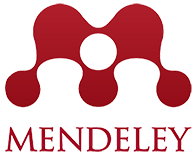Southeast Asian Muslim Washathyyah in the Global Era
DOI:
https://doi.org/10.31291/hn.v4i1.65Keywords:
Wasatiyyah (moderation) , globalization, blessing for all universe (Rahmatan lil alamin), Islam, the future religion, the Southeast Asian values.Abstract
Globalization in the world has given the huge impact on the people, as the new condition of the world has brought the world to the globalism- a consciousness and understanding that the world is one. Globalization has also unified the people in a global village that covers all aspects of life such as economic, political, cultural, religious aspects. This paper will explore the concept of waşatiyyah which stresses on the moderation and accommodative way and its implementation in Southeast Asia. The main idea of the waşatiyyah or moderation in religious life is that it offers the importance of realizing the concept of Islamic blessing for all the Universe (Islam; Rahmatan lil alamin). Therefore, the main offer of the Muslim waşaṭiyyah movement is to focus on developing civilization, freedom, justice, prosperity and better future for all the people. It is the main capital of the Waşatiyyah in Southeast Asia to give the significant contribution to the globalization of the world.
Downloads
References
Ahmad, Khurshid, 1976, Islam: Basic Prinsiples and Characteristics, London: Islamic Council of Europe.
Ahmed, Akbar S. and Hanting Donnan, 1994, Islam in the Edge of Postmodernity, an Article in Islam, Globalization and
Postmodernity, London: Routledge.
Al-Tabari, Jami' al-Bayan, Vol. 3.
Al-Suyuti, Ad-Dur al-Mansür fi Tafsir al-Ma'sur, Vol. 5.
Asyur, Ibnu, Al-Tabrir, Vol. 2.
At-Tadafi, Syekh Muhammad bin Yahya, 2003, Mahkota Para Auliya, Syekh Abdul Qadir Jailani, Jakarta: Prenada.
Az-Zuhaili, Muhammad, Al-I‘tidăl fi al-Tadyin: Fikran wa Sulukan wa Manhajian.
Bakar, Osman. 'Pengaruh Globalisasi terhadap Peradaban', in Jurnal Al-Huda, Volume II No. 7.
Budiman, Arif, 1994, 'Setelah Pasca Modernisme Apa?', Ummul Qur'an, Vol. V, No. 1.
Eliot, Charles W., 'The Religion of the Future' in Edmund R. Brown (ed.), Modern Essays, (Boston: International Pocket Library, Branden Publishing Company.
Farouk, Umar, 1993, 'Muslim Asia Tenggara: Dari Sejarah Menuju Kebangkitan Islam' in Syaiful Muzani (ed.), Pembangunan dan Kebangkitan Islam di Asia Tenggara, Jakarta: LP3S.
Habibi, 1988, Penerapan Teknologi Canggih di Negara sedang Berkembang, Kasus Indonesia, in Perubahan, Pembaharuan, dan Kesadaran Menghadapi Abad 21, Jakarta: Dian Rakyat.
Harahap, Syahrin, 1997, Al-Qur'an dan Sekularisasi, Yogyakarta: Tiara Wacana.
Harahap, Syahrin, 2011, Teologi Kerukunan, Jakarta: Prenada Media). Harahap, Syahrin, 2013, Islam Dinamis: Menegakkan Nilai-Nilai Ajaran Al-Qur'an dalam Kehidupan Modern di Indonesia, Yogyakarta: Tiara Wacana.
Khalid, Amru, 2004, Kalām min al-Qalb, Beirut: Dar al-Ma'arif. Madjid, Nurcholish, 1992, ‘Pemikiran Filsafat Islam di Dunia Modern: Antara Warisan Islam dan Perkembangan Zaman' in Al-Hikmah, vol. 6 Juli-Oktober 1992).
Muzaffar, Chandra, 1985, 'Kebangkitan Islam Suatu Pandangan Global' in Harun Nasution at. Al., (ed.), Perkembangan Modern dalam Islam, Jakarta: Yayasan Obor, 1985.
Nasr, Sayyed Hossein, 2010, Traditional Islam in the Modern World, Newyork: Harpercollins.
Rahman, Fazlur, 1984, Islam and Modernity, Center for Middle Eastern Studies.
Roy, Oliver, 2005, Globalized Islam, The Search for New Ummah, New Delhi: Rupa, Co.
Semiawan, Conny R. et. Al., 1993, Mencari Strategi Pengembangan Pendidikan Nasional Menjelang Abad XXI, Jakarta: Grasindo Utama.
Shaw, George Bernard, 1936, The Genuine Islam, Singapore, Vol. 8. Sunan al-Turmüzi, Bab al-Fitan.
Şahih Muslim, Bāb al-Iman.
Torrey, C. C., 1892, The Commercial-Theological Term in the Quran, London: E. J. Brill.
Downloads
Published
Issue
Section
License
Copyright (c) 2015 Heritage of Nusantara: International Journal of Religious Literature and Heritage

This work is licensed under a Creative Commons Attribution-NonCommercial-ShareAlike 4.0 International License.






